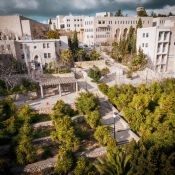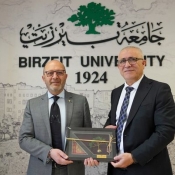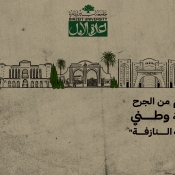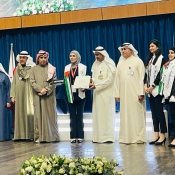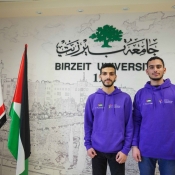VR brings to life the spirit of Birzeit
Imagine if you were able to tour Birzeit University’s campus from the comfort of your home and interact with the university's faculties and numerous facilities. That is what Associate Professor and head of the Virtual Reality Laboratory (VR-Lab) at the Norwegian University of Life Sciences Dr. Ramzi Hassan intends to develop.
VR is a computer technology that projects images, sounds, and haptic feedback to its users, allowing them to experience natural wonders, historic sites, or even future simulations as if there were physically present in those situations. These features make VR the perfect candidate as the medium through which everyone will have the ability to tour the University’s sprawling campus and experience the decades-old spirit of Birzeit.
Dr. Hassan, the former lecturer and Chair of the Department of Architecture at Birzeit University, founded the VR-Lab at the University of Life Sciences and participated in founding the VR-Lab at Birzeit University. He has more than 20 years of experience in 3D visualization and Virtual Reality. Dr. Hassan has recently spent three months as part of his sabbatical leave at Birzeit University, and, while there, his research activities focused on investigating the potentials of using VR as a tool for documentation of heritage sites and a new apparatus for education.
VR’s role as a tool of education and documentation was prominently demonstrated in the Hisham Palace VR Project. The project digitally reconstructed Hisham’s Palace through data collection, 3D library creation, and 3D modeling, all of which culminated in VR being used as a tool of communication between the various planners, architects, archaeologists, and historians involved in the project. It allowed for a different take on the historical and archaeological interpretations of the site and its importance. By using the Hisham Palace VR project as case study, Dr. Hassan investigated the added value of using VR as an “Edutainment” tool, entertainment with an educational aim.
The Palace VR Project was a breakthrough not only for its use of VR as a tool of historical documentation and education, but also because of the VR adoption that it spurred both within the Palestinian context and regionally. There are a lot of historical sites in Palestine that are, due to the nature of the Palestinian situation, inaccessible, under-maintained, or both. Introducing VR to Palestine aims to circumvent these difficulties by acting as a medium for the preservation, documentation, and representation of these cultural and historical sites and historically important landscapes.
As a leading institution of academic excellence in Palestine, the VR tour will provide access and enable visitation to Birzeit University by everyone wherever they are around the globe.


